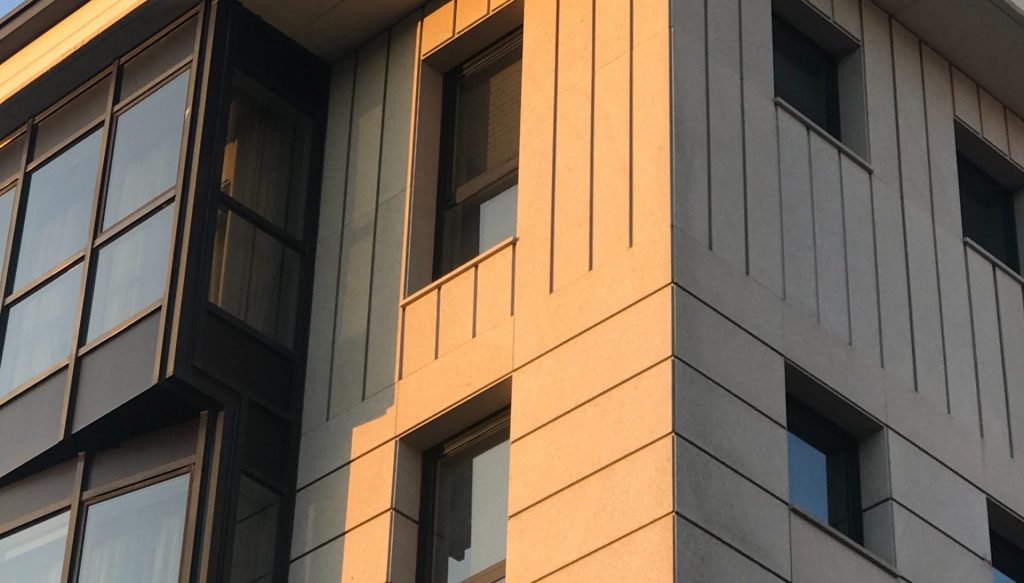Vinyl Siding Corner Trim Repair Steps

Vinyl sidings are designed to as the first line of defense for your walls against rainwater, snow, and strong winds, as such, these sidings are designed to be durable and long-lasting compared to other more conventional sidings. However, just like any building material out there, vinyl sidings are not perfect and will eventually give in to the test of time.The corners of these sidings get as much exposure that any part of your sidings since these areas are designed to break strong wind and redirect rainwater. For wooden panels, it’s just a simple task of removing the corner panels and then replacing it with the same material. For vinyl sidings, it’s a more tricky approach since vinyl corner pieces connect the vinyl sheets and the sidings together.
But before we discuss how we can repair the corners of your vinyl sidings, we have to know what are the unique pros and cons that vinyl sidings have over other siding and roofing materials.
Vinyl Siding Pros and Cons
It’s best for homeowners to do some prior research before making any final decisions. Most individuals would jump to the chance of buying vinyl sidings since the idea that they don’t have to do much work in installing and painting their home, especially if they are always busy at work or taking care of your children.
Even though vinyl sidings might seem like it will not take much work and maintenance, experts in roof and siding maintenance would still suggest not to leave your vinyl sidings unchecked. ·
Durable and long-lasting
One of the reasons why vinyl sidings are widely-used in the United States is that it is easily one of the more durable and cost-effective materials in the market. The average lifespan of vinyl sidings under the right circumstances would be 20 – 40 years.
Theoretically, if you’re living in the same house for 80 years, then you will only have to replace your sidings ones in your lifetime.
Low-maintenance and easy to wash
Most siding specialists would still suggest not to neglect your sidings just because it is low maintenance.
Comes in a variety of styles and colors
There are different styles and varieties of vinyl sidings that can be easily found on your local builder’s depot. This makes vinyl sidings versatile for any architectural style of any house. However, just like every other building material, vinyl sidings do have their own disadvantages
Thinner than other sidings
Usually, thicker sidings can translate to more insulation which can lessen energy costs. However, vinyl sidings are thinner than their counterparts and will have a harder time keeping penetrative heat and cold temperatures out.
Can be neglected
Most homeowners think that low-maintenance means that they do not have to do regular maintenance on their home and can lead to complacency which can lead to neglect.
Can be harmful to the environment
For centuries, natural materials have been used for sidings that could easily decompose or erode, such as wood and natural stone. During the turn of the 20th century, vinyl sidings became more common and the plastic-based material can be difficult to recycle and can ultimately harm the environment.
Repairing Vinyl Siding Corner Trims
Tradesmen who specialize in repairing vinyl siding corner trims recommend taking the following steps in order:
- Inspect and measure the dimensions of the damaged area on your corner trim.
- Extend to at least 4 inches on the original measurement.
- Don’t forget to use the same style and color of your original trim.
- Removal of the nail flanges located on the two ends placed on the corner trim with the tin snips.
- Use of medium-grit sandpaper in order to sand 2 inches directly above and below the surface you are repairing on the house’s trim. It is imperative to make sure that the texture is just enough to roughen the surface for the adhesive.
- Sand the underside of the replacement with the same texture as well before removing all the dust from the sanding.
- Apply polyurethane glue on the underside using a paintbrush and wait for the blue to have a more viscous texture before placing the replacement patch on the house’s corner trim.
- Press the replacement patch firmly into the old trip so that the glue can firmly attach both with no problem.
- Attach the painter’s tape on the top side of the replacement patch to hold the panel in place until the glue settles.
- Apply tape along the bottom edge of the patch so that glue will not easily ooze off from the replacement trim.
- After you’re done, it’s best to let your patch dry overnight before you do remove the take from the edges.
If you’re still not decided on what siding material you should be using or if there are some major repairs that have to be done, then you can always commission a professional siding and roofing contractors who have the necessary manpower with years of experience in repairing, installation and maintenance of vinyl siding Cherokee.